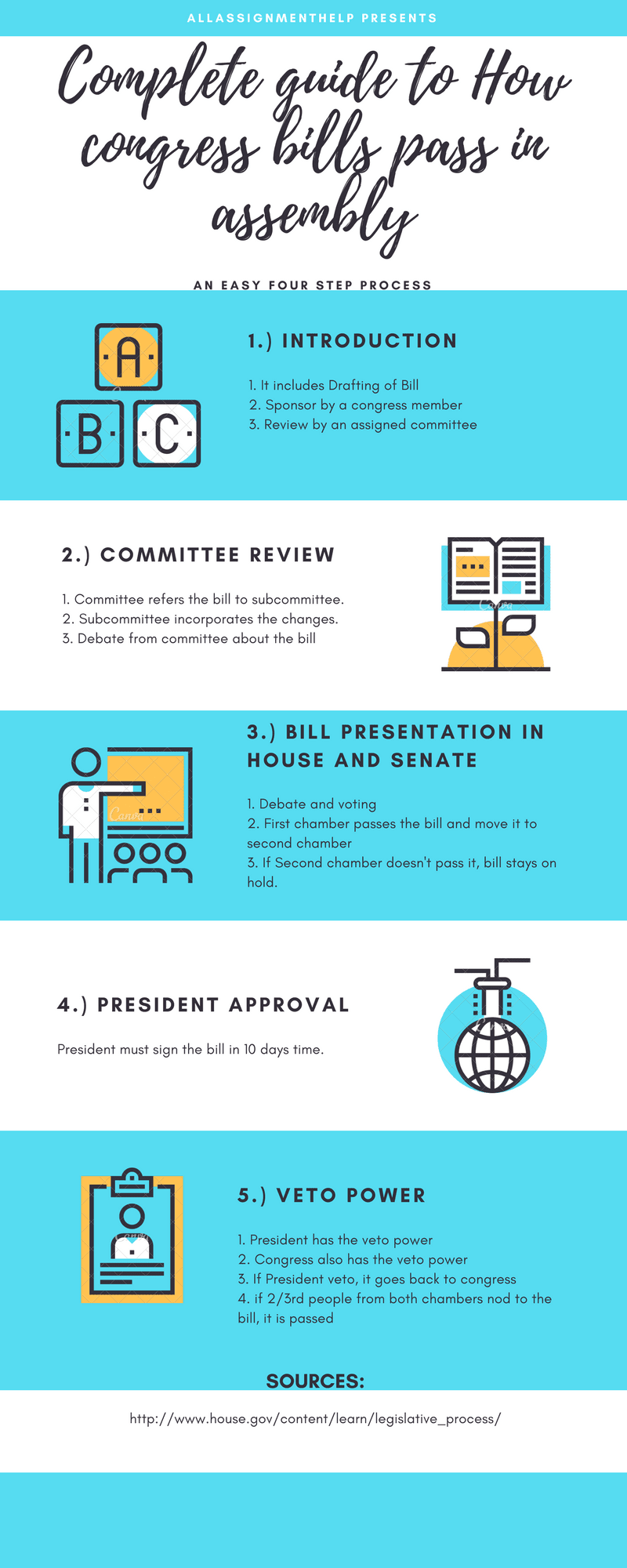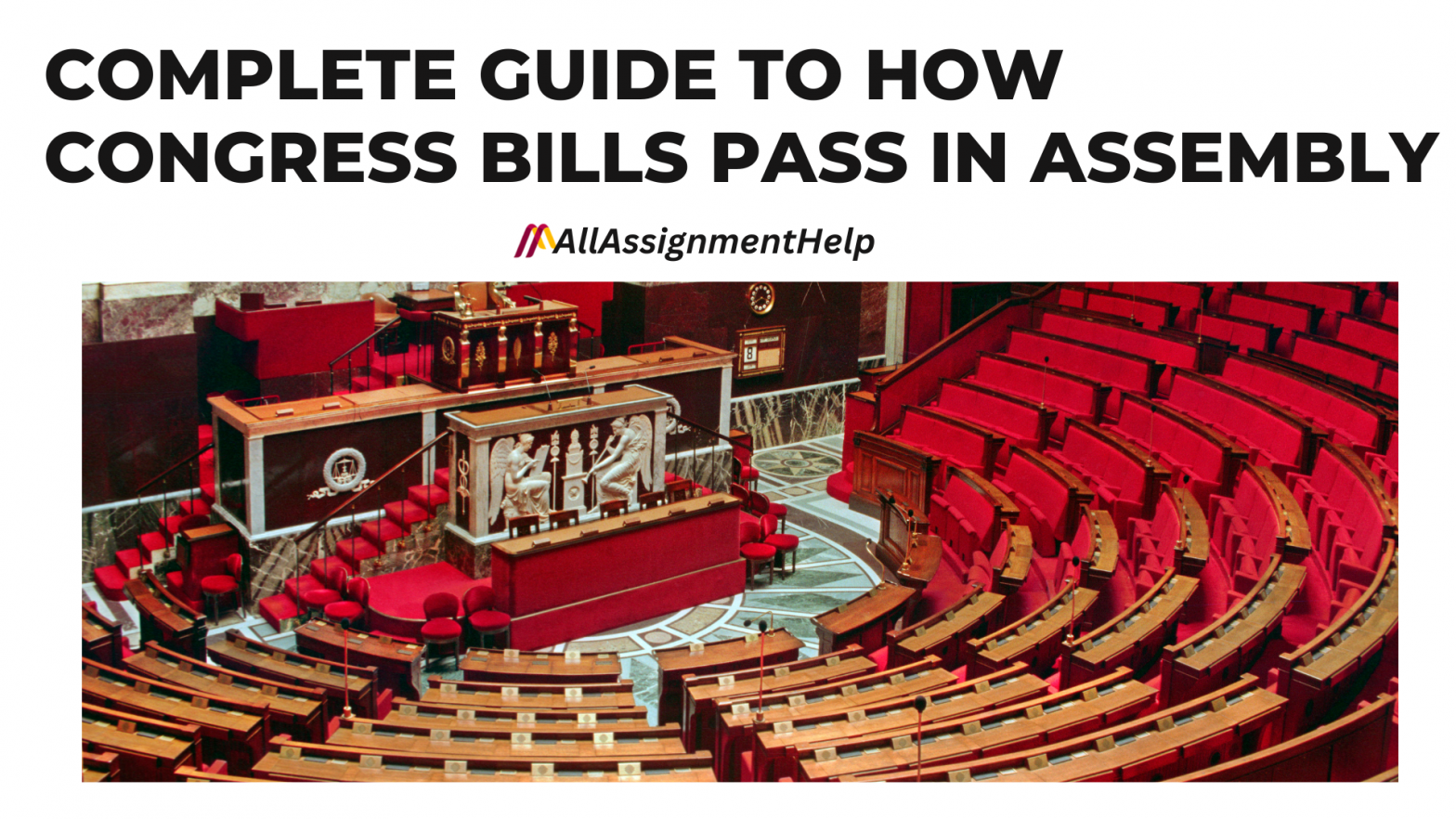As good citizens of the country, all the youth need to know about the law-making procedure. A legislative proposal in parliament is called a bill. To become an act of parliament, any bill from Congress has to pass through varied stages set by the government. As of now, there are three stages through which any of the congressional bills have to be passed to reach the Assembly. Are you curious to know about the varied stress that the Congress bills pass in the Assembly? If yes, then look into the information mentioned in this blog post by allassignmenthelp.com. In this write-up, we have briefly explained the five stages of passing a bill in the legislature. Apart from that, we have also included many pieces of information that might be useful for students in high school and college. So don’t be lazy and read this write-up till the end.
Also Read: A Student’s Guide To A Better Memory
How Congress Bills Passes in Assembly
In recent times, we have all witnessed changes in the rules related to the field of education and many other areas that have improved and affected our lives in many ways. It is common for all of us to neglect the rules and regulations of our juvenile system, as we may not be aware of how it all works. With the introduction of court systems, it has become extremely simple to know the different bodies of court systems and the different methods used by state and federal courts for special attention. To start your knowledge, it is important for you to first know how Congress passes bills in the Assembly that you later see as laws. There are certain steps to completing the entire process; we have simplified them for your understanding. So let’s get started.
Primary stage of congress bills- Introduction
- Bill drafting is the first stage.
- Drafting a bill is something anyone could do. However, you won’t have the right to sponsor and introduce it in Congress until you become a member yourself.
- Another option is to request a Congress member sponsor it.
- The president and a member of the cabinet also have the right to draft a bill; they have to ask a member of Congress to introduce it.
- Soon after the introduction of the bill, an assigned committee evaluates it. This includes evaluation from the perspective of passing or rejecting the Congress bill.
Second stage – Committee review
- The committee refers the bill to the subcommittee to review it well.
- In this process, they could hold hearings about the bill.
- The recording of expressed views is a formal practice. However, it is possible to release these views to the public too.
- The subcommittee does the job of making changes and amendments to the bill before reporting it to the full committee.
- The full committee also debates the bill. A collective vote from the committee members set the stage for the bill’s presentation either to the full house or senate.
- Any of the amendments can become part of the bill only if they are actively accepted by the members. The members can express their opinions by voting directly.

Third stage- Bill presentation in the house and senate
- The bill goes to the House and Senate after the committee approves it by debating and making amendments to it. Here, the same procedure of debate and voting follows, which determines whether the bill is passed or not. If only one chamber passes the bill, then it is an “act.” Every Congress bill has to follow the mandatory philosophy of law before passing.
- Once a chamber passes the bill, it is moved to the second chamber, either the House or the Senate. This chamber has the right to give approval or rejection to the bill. Furthermore, the concerned chamber can make changes to the bill. However, all of it may not happen if the other chamber already has the legislation in the pipeline.
- The final bill should be identical for both chambers; only then does it work. If there is a huge difference between the legislation passed in both houses, then a bicameral conference committee tries to cut down on the differences. The committee members come up with some recommendations for making changes to the bill. If the House and Senate do not agree with it, then the legislation does not go further.
Fourth stage of congress bills – President approval
- After the approval of the chamber, the president reviews the proposed law. The same could also happen if the bill remains on the president’s desk unsigned for a period of more than 10 days while Congress members are attending the session.
- The president also has the right to reject the legislation using his veto power and could send it back to Congress with an explanation. The president must sign the bill within 10 days; otherwise, it cannot go further.
- Congress can also override the president’s veto power. This takes the bill back to Congress for a vote. It can become law by overriding the presidential veto if the bill gets the nod from a two-thirds majority in both chambers.
Final stage – Veto power
- A veto is a legal power that is in the hands of the president or monarch.
- The last and final stage of Congress’ bills passing in the legislative assembly under the hands of the president. The president has the power to either nod their head and accept the bill or make it a law of the country. They also have the power to reject the bill and stop it from becoming law.
- There are two types of executive vetoes: one is a legislative veto, and the other is a veto over power. Each of these vetoes has its own power and makes an important contribution.
Also Read: Thank You Notes For Teachers – Guide with Examples
The Best Course to Learn About Congress’ Bills
Political Science 102: American Government is one of the best courses to study if you are keen to learn more about the American government’s systems. In this course, you must learn 17 different chapters, under which you might have more than 10 lessons on different topics. Political Parties in the United States Government, American Political Culture, Opinion, and Behavior, and Introduction to the Study of American Government are a few of the difficult chapters of this course where most of the students score lower marks. To complete these quizzes with good grades and to reduce their tension, they consider asking, “Can someone take my online class for me?” Yes, dealing with 138 lessons appears extremely difficult for them. If you are also one of the students studying this course, here are a few tips to make your learning easier.
- To study a law course, it is essential for you to have a law mindset. It will help you think like a lawyer and complete your studies effectively.
- Skills are an important factor that will help you learn different law courses and complete your studies on time. Time management, reading, critical thinking, and writing are a few of the skills to have.
- Law is a complex course to study, which is not everyone’s cup of tea. If you have enrolled yourself in any of the related law courses, then you must first create a good study environment for yourself. Studying in an area free of distractions will help you concentrate effectively. You can also seek professional law assignment help and easily get good grades in your academics.
Also Read: An Essential Guide to the Responsibilities of the Students
About Us
This is a blog by the team of experts at All Assignment Help. I hope that you find it informative and may be able to use it as a reference to develop your knowledge. Are you a student who is studying any course related to law and legislation and wants to become a good citizen? There are many law courses, like Certificate in Law and the Legal System of USA,” that will help one learn more about their human rights. These courses can be suitable for anyone, including non-lawyers. While studying the law courses, if you face any difficulty, feel free to reach out to us for help. All you have to do is ask, “Can I pay someone to take my online class for me?” to our professional class takers. The rest of things will all be managed by our experts, and you can easily improve your academic performance.
Frequently Asked Questions
| Question 1: What is the first stage of passing any bill in the legislative assembly? Answer 1: Bill drafting is the first stage to be followed while passing any bill in the legislative assembly. |
| Question 2: What are the two types of bills in Parliament? Answer 2: The first bill is the public bill, which is also known as the government bill, and the other one is the private bill. |
